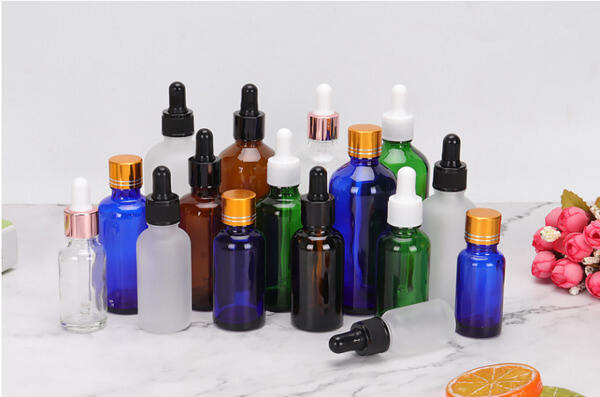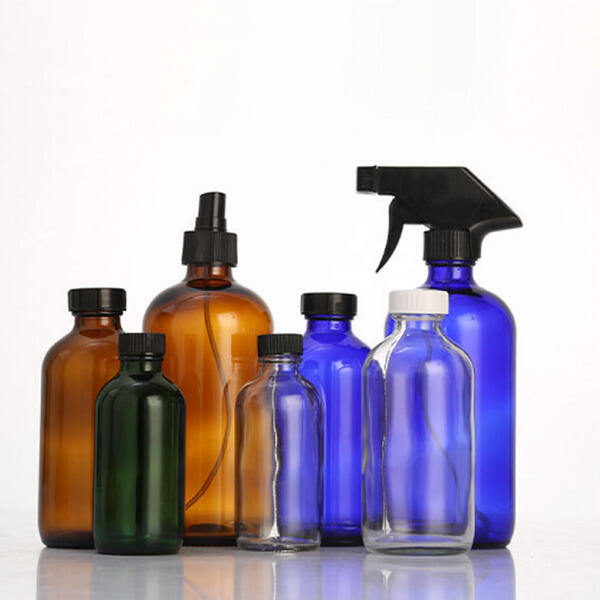How to Label Medicine Containers for Easy Identification
Properly labeling medicine containers is a simple yet critical step in ensuring safe and effective use of medications. Whether you’re managing prescriptions for yourself, a family member, or a loved one, clear labels on medicine containers prevent mix-ups, reduce the risk of missed doses, and help track expiration dates. With so many types of medications—prescriptions, over-the-counter pills, liquids, and creams—organizing and labeling medicine containers correctly can turn a confusing cabinet into a well-organized system. This guide breaks down the best practices for labeling medicine containers, from essential information to practical tips for readability and safety.
Why Proper Labeling of Medicine Containers Matters
Labeling medicine containers isn’t just about organization—it’s about safety. Every year, thousands of people make mistakes with their medications, from taking the wrong dose to using expired drugs, and many of these errors can be traced to unclear or missing labels on medicine containers.
For example, a bottle of pain relievers without a label might be confused with vitamins, leading to accidental overdose. A prescription cream left unlabeled could be mistaken for lotion, causing skin irritation or ineffective treatment. Clear labels on medicine containers also help caregivers manage multiple medications, ensuring each dose is given at the right time to the right person.
Beyond safety, good labeling saves time. When medicine containers are clearly marked, you can quickly find what you need, whether you’re in a hurry to take a daily pill or helping someone else locate their medication. It also helps track when a prescription needs to be refilled, preventing gaps in treatment.

Essential Information to Include on Medicine Containers
Every label on a medicine container should have key details to ensure safe use. Here’s the information you must include:
Name of the Medication
Always write the full name of the medication, not just a nickname. For example, use “Lisinopril” instead of “blood pressure pill” to avoid confusion with other similar drugs. If the medicine is a brand name (like Tylenol) and a generic name (acetaminophen), include both to be clear.
Dosage Instructions
Specify how much to take and how often. For pills, this might be “1 tablet daily” or “2 capsules every 6 hours as needed for pain.” For liquids, include the measurement: “5 mL (1 teaspoon) twice a day.” If the dosage changes (e.g., “1 tablet in the morning, 2 at night”), write it out clearly to avoid mistakes.
Patient’s Name
If multiple people in the household take medications, label each medicine container with the user’s name. This is especially important for families with children, seniors, or roommates, as it prevents mix-ups between similar-looking pills or bottles.
Prescriber or Source
Note who prescribed the medication (e.g., “Dr. Smith, Cardiologist”) or where it was purchased (e.g., “Pharmacy: Walgreens, 05/2024”). This helps track refills and provides context if you need to ask questions about the medicine later.
Expiration Date
All medicine containers should clearly show the expiration date. Expired medications may lose effectiveness or become unsafe to use. Write the date in a standard format (e.g., “Exp: 12/2025” or “Good until December 2025”) so it’s easy to read at a glance.
Special Instructions
Include any additional notes, such as “Take with food,” “Avoid sunlight,” “Shake well before use,” or “Store in the refrigerator.” These details are critical for getting the most benefit from the medication and avoiding side effects.
Tips for Making Labels on Medicine Containers Readable
Even if you include all the essential information, a label that’s hard to read won’t help. Follow these tips to ensure your medicine containers’ labels are clear and easy to understand:
Use Large, Bold Font
Many people, especially seniors or those with vision issues, struggle with small text. Write or print labels using a large, bold font. If handwriting, use a thick marker (like a permanent marker) and avoid cursive—print letters are easier to read. For printed labels, choose a font size of at least 12 points.
Contrast Colors
The label’s text should stand out against the medicine container. If the container is white or light-colored, use black or dark blue ink. For dark-colored bottles, opt for white or yellow labels with black text. Avoid light colors on light backgrounds (e.g., yellow ink on white paper) as they’re hard to see.
Keep It Simple and Uncluttered
Don’t overcrowd the label with unnecessary information. Stick to the essential details listed earlier, and arrange them in a logical order (e.g., name, dosage, patient, expiration). Leave space between lines to prevent the text from looking jumbled.
Use Waterproof Labels
Medications are often stored in bathrooms or kitchens, where moisture can smudge ink. Use waterproof labels or cover paper labels with clear tape to protect them from water, humidity, or spills. This ensures the information stays readable for the life of the medicine.
Update Labels When Needed
If the dosage changes or the medicine is transferred to a new container (e.g., a pill organizer), update the label immediately. Cross out old information and write the new details clearly to avoid confusion. Never reuse a label from an old medicine container for a new drug.
Labeling Different Types of Medicine Containers
Not all medicine containers are the same, and labeling methods may vary depending on the type of container. Here’s how to handle common ones:
Prescription Bottles
Most pharmacy prescription bottles come with pre-printed labels that include key information, but they can be hard to read due to small font or clutter. Add a supplemental label with larger text highlighting the dosage, patient name, and expiration date. Use a label sticker or write directly on the bottle (if it’s not already too crowded).
Pill Organizers
Weekly pill organizers are great for managing daily doses, but they need clear labels to avoid mix-ups. Label each compartment with the day of the week (e.g., “Monday AM,” “Wednesday PM”) and, if needed, the type of medication in that slot (e.g., “Blood Pressure”). For organizers with multiple slots per day, color-code them (e.g., red for morning, blue for night) to make identification faster.
Liquid Medicine Bottles
Liquid medications often come in small bottles with narrow surfaces, making labeling tricky. Use a small waterproof label on the front with the name, dosage, and expiration date. If the bottle is dark (to protect light-sensitive liquids), attach the label to the cap or a separate tag tied around the neck.
Cream or Ointment Tubes/Jars
Tubes of creams or ointments can be labeled on the flat surface of the cap or on a sticker wrapped around the tube. Jars can have labels on the lid or the side, but avoid covering the original instructions if they’re printed on the container. For tubes, write near the top so the label doesn’t get smudged when squeezing out the product.
Homemade or Repurposed Containers
If you transfer medicine to a repurposed container (e.g., a small jar for travel), label it thoroughly. Include all essential information, even if you think you’ll remember what’s inside—memory slips are common, especially with similar-looking medications.
Tools and Supplies for Labeling Medicine Containers
You don’t need fancy equipment to label medicine containers effectively. Here are some simple tools that work well:
Permanent Markers
A set of thick-tipped permanent markers (black, blue, red) is essential. Black is best for most labels, while red can highlight important details like “Expired” or “Take with Food.”
Label Stickers
Waterproof label stickers (available at office supply stores or online) are perfect for clean, professional-looking labels. They come in various sizes, so choose small ones for narrow containers and larger ones for prescription bottles.
Label Makers
For those who prefer printed labels, a handheld label maker (like a Dymo) can create clear, consistent labels. Many models let you adjust font size and style, making it easy to create readable labels for medicine containers.
Color-Coding Supplies
Colored tape, stickers, or markers can help organize medicine containers by type (e.g., green for vitamins, red for pain relievers) or user (e.g., blue for Mom, yellow for Dad). Color-coding adds a visual cue that speeds up identification.
Clear Tape
Use clear packing tape to cover handwritten labels or paper stickers, protecting them from moisture and wear. This is especially useful for labels on containers stored in humid areas like bathrooms.
Safety Tips for Labeling Medicine Containers
Labeling is part of a larger system of medication safety. Keep these additional tips in mind:
- Never remove original labels entirely: If you add a supplemental label to a prescription bottle, keep the original pharmacy label intact—it contains important details like lot numbers and warnings.
- Dispose of unlabeled medications: If you find a medicine container without a label and can’t identify the contents, safely dispose of it. Don’t guess what it is—this is a major safety risk.
- Check labels regularly: Review labels every few months to ensure they’re still readable and that expiration dates are up to date. Replace faded or smudged labels immediately.
- Keep medicine containers in a consistent location: Store labeled medicine containers in a designated spot (like a medicine cabinet or drawer) to reduce the chance of misplacing them. A well-organized space makes it easier to check labels quickly.
FAQ
What if the original label on a medicine container is smudged or faded?
If the original label is hard to read, create a new label with all the essential information (name, dosage, expiration) based on what you can still make out or your prescription records. If you’re unsure about any details, contact your pharmacy or doctor for confirmation.
Is it safe to write directly on medicine containers?
Yes, as long as you use a permanent marker and avoid covering important information on the original label. Test the marker on a small, hidden area first to ensure it doesn’t bleed through or damage the container.
How do I label medicine containers for children?
For children’s medications, use large, colorful labels with clear instructions. Include the child’s name prominently and use simple language (e.g., “1 teaspoon after breakfast”). Store children’s medicine containers out of reach, even with labels.
Can I use abbreviations on labels?
Use only common, clear abbreviations (e.g., “QD” for daily, “mL” for milliliters) that you and others using the medication will understand. Avoid confusing abbreviations—when in doubt, write it out fully.
How often should I check expiration dates on medicine containers?
Check expiration dates every 3–6 months when organizing your medicine cabinet. Dispose of any expired medications properly (many pharmacies offer take-back programs) and update labels if you transfer remaining medicine to a new container.
Table of Contents
- Why Proper Labeling of Medicine Containers Matters
- Essential Information to Include on Medicine Containers
- Tips for Making Labels on Medicine Containers Readable
- Labeling Different Types of Medicine Containers
- Tools and Supplies for Labeling Medicine Containers
- Safety Tips for Labeling Medicine Containers
- FAQ

